People often think that a higher thread count automatically means a better bed sheet. This can be true, but not always. Manufacturers know that people think this way, so they inflate the thread count. But the quality of the sheet actually suffers from this. We’re here to help you find the best 1000 thread count sheets that are actually good ones!
Let’s start with the basics – thread count. Thread count is the number of horizontal and vertical threads that are woven together in one square inch. Although it’s not the only thing to look for in a sheet (don’t forget weave and fabric!), it’s definitely an important one. And to find a great sheet, it’s not just about understanding the number. You need to know what’s behind it.
In This Article
Best 1000 Thread Count Sheets | What is Thread Count | Thread Count vs GSM | The Dirty Secret Behind Some 1000 Thread Count Sheets | Different Types of Cotton
Best 1000 Thread Count Sheets
⭐ Best Overall: Royal Hotel’s 100% Cotton sheet set ⭐
⬇ Jump to review
Best Egyptian Cotton: Bluemoon Home’s sheet set
⬇ Jump to review
Best Value Hyde Lane’s 100% Cotton sheet set
⬇ Jump to review
Most luxurious: Threadmill’s Supima Cotton sheet set
⬇ Jump to review
Most comfortable: Moonstone’s Organic Cotton sheet set
⬇ Jump to review
Best range of color: Thread Spread’s Egyptian Cotton sheet set
⬇ Jump to review
⭐Best Overall: Royal Hotel⭐

Price : from $110
Material : Long-staple cotton
Weave : Sateen
These Royal Hotel’s 1000 thread count sheets are excellent to slide on in the evening. With long-staple and single-ply threads, the quality is truly excellent. The sheets are quite heavy, as you can expect with a 1000 thread count. They may seem a bit rough in the beginning, but that is normal when it comes to cotton. This fabric softens up with time and with every wash. Just give these sheets a few washes and you’ll see how they become softer. The crispy softness together with the sateen weave keeps the sheets so well balanced.
If you have a deeper mattress, you’re in luck. Their fitted sheet fits mattresses up to 18” and stays in place thanks to an elastic band. The color selection is great – the shades are beautiful, yet not overpowering. So it’s easy to match them with the style of your bedroom.

Best Egyptian Cotton: Bluemoon Home
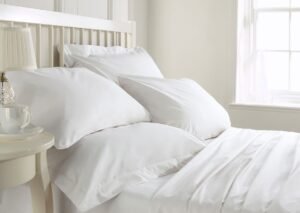
Price : From $90
Material : Long-staple Egyptian cotton
Weave : Sateen
Bluemoon’s Egyptian cotton sheet set feel just like the luxurious sheets you can find in hotels. The sateen weave makes them soft to the touch and the long staple cotton adds to the quality. You can choose from a variety of colors that will bring another touch of class to your bedroom. The fitted sheet fits extra deep mattresses, up to 18”.
If you’re not one for ironing, we have a neat trick for you. Because cotton can sometimes get wrinkly. After you’ve dried the sheets, take them out of the dryer quickly and lay them on the bed. The sheets will even out nicely and you can skip the ironing.

Best Value: Hyde Lane
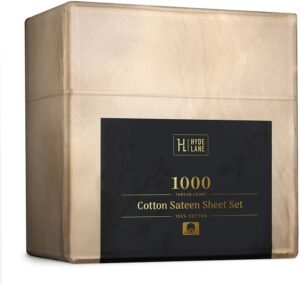
Price : From $110
Material : Long-staple cotton
Weave : Sateen
The quality of these Hyde Lane 1000 thread count sheets is exceptional, especially if you consider the price. The sheets are thick and soft, becoming more soft as you wash them. There are a few reasons why Hyde Lane particularly stands out. The stitching and detail is extraordinary. With deep pockets, the fitted sheet will snug nicely over mattresses that are up to 18″. And the elastic that is sown fully around the fitted sheet will keep it nicely in place. Even if you tend to toss and turn a bit more during the night.

Most luxurious: Threadmill

Price : From $140
Material : Extra-long-staple Supima cotton
Weave : Sateen
Threadmill Home Linen’s sheet set is made from single ply Supima cotton. And is without a doubt one of the best 1000 thread count sheets you can find. The extra long staples ensure that you get great quality sheets that are soft and won’t pill. You may need to wash them a few times until their true softness starts coming out. But once it does, you can fully enjoy this luxurious set.
Another reason to buy from Threadmill Home Linen is because they really step up their nature preserving game. Threadmill ships the sheet sets straight from their factory, which runs completely on solar and wind energy. Plus, this helps keep the costs down, as there is no markup from a middleman. Threadmill also cuts down on the use of plastic by packaging their sheets in reusable 100% cotton tote bags.

Most Comfortable: Moonstone
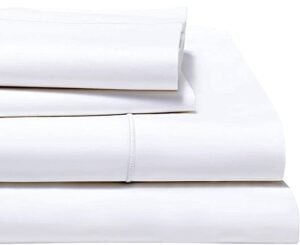
Price : From $109
Material : Long-staple cotton
Weave : Percale
Moonstone’s organic cotton sheets are ever so soft. If you’re a fan of percale, these are the perfect sheets for you. The fitted sheet is good for mattresses up to 15”, so if you don’t have an overly deep mattress, they’ll fit perfectly. Cotton is great if you tend to sleep hot or are a sweaty sleeper and this set from Moonstone is no exception. It breathes well, remains cool, and lets you rest peacefully throughout the night. They’re one of the most comfortable 1000 thread count sheets that you can get at this price.

Best range of color: Thread Spread

Price : From $86
Material : Long-staple Egyptian cotton
Weave : Sateen
Thread Spread’s cotton sheets are made from Egyptian cotton that actually comes from Egypt. To be more exact, from the Valley of the Nile river. Quite a rare find these days, we should add.
The color selection is much wider when compared to other 1000 thread count sheets. You can find solid colors and also prints. The sheets themselves have a nice and soft feel and the sateen weave makes them extra smooth. They are a bit prone to wrinkling, so it’s best to take them out of the dryer while they’re still a bit hot. You can either fold them until they’re cool or lay them straight on the bed.

What Is Thread Count
Thread count is the number of horizontal and vertical threads in one square inch. The horizontal threads are also called wefts and vertical threads are called warps. So for example a 400 thread count sheet has 200 warps and 200 wefts in one square inch.

Thread count is something that generally characterizes cotton sheets. But it is also sometimes used for other natural fibers, such as linen and bamboo. Due to the different fiber thickness of these plants, you can’t really compare them one to one. A cotton sheet with 400 thread count is not the same as a bamboo sheet with 400 thread count.
Essentially, what thread count shows is how tightly the fibers are weaved together. There’s a quite longstanding myth that a high thread count indicates better quality but at face value, this is not true. A high thread count simply means that there are more threads in a square inch.
Good cotton sheets often range between a 200 and 600 thread count, whereas linen sheets which have a naturally thicker fiber generally have a thread count between 80 and 120. When it comes to bamboo sheets, a 200 to 400 thread count is the norm.
Keeping in mind those ranges, how is it that some sheets have a thread count of 1000, or even 1800? For the latter, you would have to have 900 wefts and 900 warps, but you might wonder how that is even possible! Well, technically it isn’t and there’s quite a cunning trick that manufacturers use to inflate the number of thread count in their sheets. We’ll explain it below.
Thread Count vs GSM
Keep in mind that microfiber sheets, which are made from a synthetic man-made fiber, do not have a thread count. Instead, what you’ll often come across for microfiber sheets is GMS – grams per square meter. This is a measurement of microfiber thickness. The more fibers there are in one gram, the higher the GMS, and the heavier the sheet.
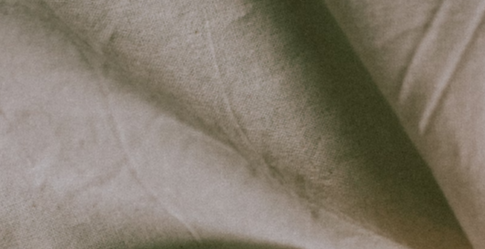
Microfiber sheets usually have a GMS between 55 and 120. The smaller the number, the lighter and thinner the sheet. Similarly, the higher the number, the thicker and heavier the sheet.
Nevertheless, you will probably come across a microfiber sheet set where the product description includes a higher number, such as 1200 or 1800. This is often a series number, or just a number to catch your eye and make you think “oh, that sheet has a high thread count, it must be really good“. Don’t fall for it! Remember that this number doesn’t actually refer to a thread count, because microfiber sheets don’t have that. This technique tricks a lot of people, but if you know it, you can make smarter decisions.
The Dirty Secret Behind some 1000 Thread Count Sheets
Thread count represents the number of threads in 1 square inch. Here’s the secret behind higher thread counts, such as 1500, 1800, and sometimes also 1000 thread count sheets. It is either flat out false advertising, extremely thin fibers (which is rather rare), or multi-ply threads. The last one seems to be the most common option.

With multi-ply threads, the trick is that instead of counting each individual thread, manufacturers count each fiber (aka ply), that makes up the individual thread. So a single thread actually consists of two or sometimes more plies.
You can see this on the illustration. The final visible thread looks like it’s one thread, right? But if you look closer, it is actually 2 individual fibers twisted together. And these 2 threads are both again made from 2 fibers that are twisted together. So it’s actually a 4-ply thread. The manufacturer only needs 250 threads to say that they have a 1000 thread count sheet.
You might wonder why this is such a bad thing. It’s because the fibers in multi-ply threads are usually lacking in quality. The high number seems impressive and draws people in, but in reality you might get a much better deal if you went with a good quality 400 thread count sheet.
Always check that the product is single-ply.
Different Types of Cotton
All the products in our selection of the best 1000 thread count sheets are cotton sheets. But cotton is not always the same. There are different types of cotton and the main ones are Egyptian cotton, Pima cotton and Supima cotton, and Upland cotton.
One thing that characterizes every type of cotton is staple length. This refers to the length of the cotton fiber: short, medium, long and extra long. You can see the lengths in the table below.

The longer the fiber, the better the quality. Fiber length affects the quality of the sheet in many ways. Fabrics with longer fibers have less fiber ends sticking out, so they’re softer to the touch. Short fibers are more prone to exiting the fabric and starting the pilling process. And they are less durable than sheets made from long or extra-long fibers.
Some cotton types that are considered higher quality, such as Egyptian cotton, have long or extra-long staples. Which is exactly what brings their quality up. But there are many ways that sellers try to trick buyers, so here are some smart tips for you, so you would not fall prey to any sneaky schemes.
Egyptian Cotton
Egyptian cotton is one of the highest quality cotton. The name has become somewhat misleading because not all sheets that carry this label actually come from Egypt. Nor is all the cotton grown in Egypt high quality cotton. It used to be that way, however. Egyptian cotton was different from other types of cotton, as it had long staples. In other words, the cotton fibers were longer than usual.
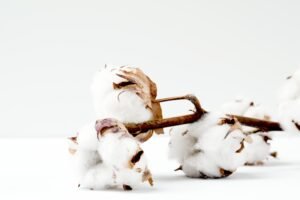
These days Egyptian cotton is a name that is used more loosely than in the old days when it meant only Egyptian-grown extra-long staple cotton. But the good news is that in some cases this does not affect the quality too much. Long or extra-long staple cotton produces sheets that are higher quality, softer, more comfortable, and will last longer.
Pima and Supima Cotton
Pima cotton is another high quality cotton. Some consider it even better that Egyptian cotton. These two top quality cottons make up only around 10% of cotton sheets in the world.
But what is pima cotton? It comes from a plant (gossypium barbadense) that produces extra-long staple fibers. As we saw before, the staple is what determines the quality of the fabric.
These plants require a a lot of sun, humidity, as well as rainfall in order to thrive, so they don’t grow just anywhere. Originally, it was cultivated in Peru and Ecuador. Later, as it became widespread in the United States, it was the Pima tribe of the American Indians who started growing it in the south-west. The tribe also gave the cotton its name. Out of all the cotton sheets sold in the US, pima cotton makes up about 3%.

There’s a certain type of pima cotton that is exclusively grown in the US. And it’s sold under the trademark Supima®. The name Supima is a combination of supreme and pima, and these are some pretty exclusive sheets indeed. Today, there are only around 600 US manufacturers and retailers who are licensed to sell their product under the Supima label. It’s a label that shows excellent quality.
Upland Cotton
Upland cotton, which is also known as Mexican cotton, is usually a lot cheaper than Egyptian, Pima or Supima cotton. The quality is usually not as high, which often explains the lower price.
The reason why Upland cotton is considered lower quality is because of its short or medium staple fibers. Short fibers simply have more fiber ends sticking out and this reduces the softness. The second downside is that short and medium staple cotton sheets tend to pill more easily and are less durable. That’s because it’s quicker and easier for short fibers to start exiting the fabric and forming the pill, eventually becoming more prone to tearing.
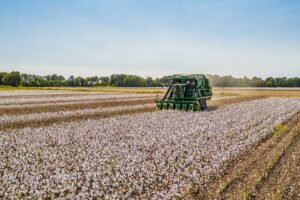
Around 90% of all cotton sheets are Upland cotton, so it’s hugely popular and available. And even though it’s no match for Egyptian, pima, or Supima cotton, it still retains the main characteristics that cotton is loved and appreciated for. It’s a highly breathable fabric, it absorbs and wicks water, and is soft.
Not all Upland cotton sheets have short or medium staples, though. You can also find those with long or extra-long staples. And those are the ones you should go for!
